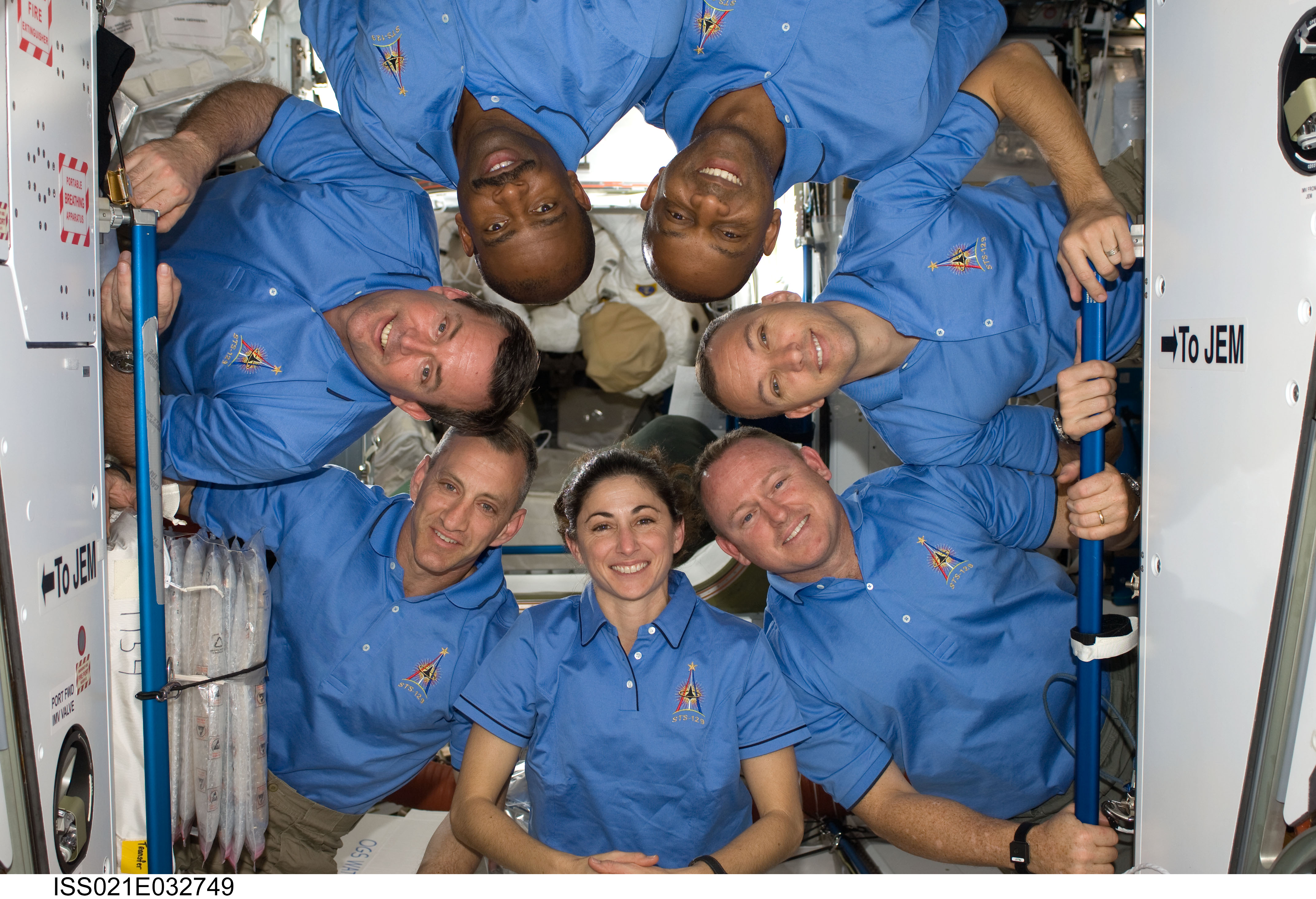STS-9
STS-9 carried the first Spacelab mission and the first astronaut to represent the European Space Agency.
Orbiter
mission duration
Launch
Landing

Mission Facts
Mission: Orbital Laboratory and Observations Platform/First Spacelab Mission First Rollback/First 6 Crew Member Flight
Space Shuttle: Columbia
Launch Pad: 39A
Launch Weight: 247,619 pounds
Launched: November 28, 1983 at 11:00:00 a.m. EST
Landing Site: Edwards Air Force Base, Calif.
Landing: December 8, 1983 at 3:47:24 a.m. PST
Landing Weight: 220,027 pounds
Runway: 17
Rollout Distance: 8,456 feet
Rollout Time: 53 seconds
Revolution: 167
Mission Duration: 10 days, 7 hours, 47 minutes and 24 seconds
Returned to KSC: December 15, 1983
Orbit Altitude: 155 nautical miles
Orbit Inclination: 57 degrees
Miles Traveled: 4.3 million
Crew
John W. Young, Commander
Brewster H. Shaw, Jr., Pilot
Owen K. Garriott, Mission Specialist
Robert A. R. Parker, Mission Specialist
Byron K. Lichtenberg, Payload Specialist
Ulf Merbold, Payload Specialist
Launch/Landing Highlights
The launch set for Sept. 30 was delayed 28 days due to a suspect exhaust nozzle on the right solid rocket booster. The problem was discovered while the shuttle was on the launch pad. The shuttle returned to the Vehicle Assembly Building (VAB) and was demated. The suspect nozzle was replaced and the vehicle restacked. The countdown on Nov. 28 proceeded as scheduled.
The landing was delayed approximately eight hours to analyze problems when general purpose computers one and two failed and inertial measurement unit one failed. During landing, two of three auxiliary power units caught fire.
Mission Highlights
This flight carried first Spacelab mission and first astronaut to represent the European Space Agency (ESA), Ulf Merbold of Germany. ESA and NASA jointly sponsored the Spacelab-1 and conducted investigations which demonstrated the capability for advanced research in space. Spacelab is an orbital laboratory and contains an observations platform composed of cylindrical pressurized modules and U-shaped unpressurized pallets which remain in the orbiter’s cargo bay during flight. Altogether 73 separate investigations were carried out in astronomy and physics, atmospheric physics, Earth observations, life sciences, materials sciences, space plasma physics and technology. This was the first time six persons were carried into space on a single vehicle.
40 Years Ago: STS-9, the First Spacelab Science Mission
On Nov. 28, 1983, space shuttle Columbia took to the skies for its sixth trip into space on the first…
Read the Story




































